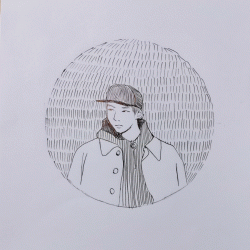27/11/2020
MY UNDERSTANDING – PSYCHOLOGY
My understanding of cultural identity mostly came from when I learned about the psychology of human relationships in IB Psychology. Cultural identity in this case refers to our self-perception and where in the world that we define ourselves to belong to. This can be nationality, ethnicity, social class, generation, locality, or any kind of group with its own distinct culture.
The constructing of one’s cultural identity relies on common norms you share with others that make your group different from others. It is not possible to have one existing culture.
SOCIAL IDENTITY THEORY
Social identity theory is a theory which states that an individual’s sense of self is developed on the basis of group membership, and this identity is shared with other members of the same group. This means that as humans prefer to be part of a group, we by instinct create in-groups and out-groups in our heads, categorising people as ‘us’ or ‘them’.
Naturally, individuals seek to enhance their own self-esteem by identifying with specific social groups, though the enhancement is only to the extent that one’s own social groups are perceived as somehow superior to the other competing groups.
Self-categorisation is when an individual sorts themselves into various social groups, which then forms the basis of their personal identity. They learn the behaviours associated with group membership, and differentiate these from others, and internalise group norms and attributes through depersonalisation and self-stereotyping, making individual behaviour normalised to the group. An intergroup behaviour is always preceded by social categorisation.

Brewer (1991) hypothesised that framed relationships between personal identity and social identity are a set of nested identities.
Any individual is influenced by a number of social identities (girl, gymnast, musician, French). Each social identity influences and contributes to the development of a unique personal identity at the core.
Humans tend to see similar individuals as more predictable, and therefore relationships are sought with them. This is also why individuals join social groups for the purposes of self-enhancement, increasing self-esteem or for the reduction of uncertainty.
Implications of this are considerable in the age of globalisation as different social identities are increasingly brought together, which often leads to intergroup conflict and therefore increasing the need for intergroup understanding.
ARTISTS
An artist presented in class that piqued my interest was Ai Weiwei and his sunflower seeds artwork.

It was taking something that was at a glance mundane and familiar and creating something of a large scale out of it. Sunflower seeds were snacks that I enjoyed as a child growing up in an Asian country and the artwork made me incredibly nostalgic of my father breaking open each seed for me to eat. It felt as though sunflower seeds hold a certain time period with them.
This made me think scan through my life to find if there was a simple everyday object that I had overlooked that was integral to my identity as who I am and where I’m from. I thought about home-cooked meals and snacks and old video games. What can I do with these things? How can I represent them through a book?
⇦ HERE
⇨ MAPS
